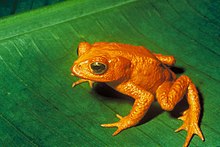
Batrachology is the branch of zoology concerned with the study of amphibians including frogs, salamanders, and caecilians. It is a sub-discipline of herpetology, [1] which also includes non-avian reptiles (snakes, lizards, turtles, crocodilians, and the tuatara). Batrachologists may study the evolution, ecology, ethology, or anatomy of amphibians.
Amphibians are cold blooded vertebrates largely found in damp habitats although many species have special behavioural adaptations that allow them to live in deserts, trees, underground and in regions with wide seasonal variations in temperature. There are over 8700 species of amphibians. [2]